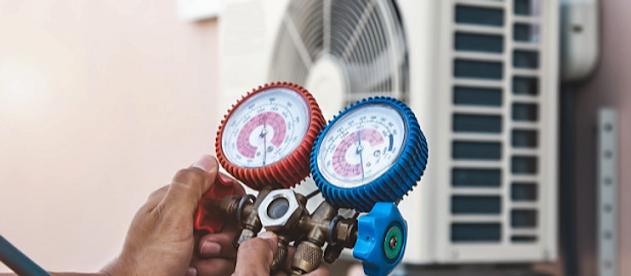Refrigerant Vacuum Pump - A Critical Requirement for Purging Operations of AC and Refrigeration Systems
Air conditioners and refrigerators are the typical requirements of many - industries, stores, and other such premises. The users run them over the years and get them cleaned from time to time. However, these systems accumulate contaminants such as moisture and noncondensable gases that do not go away with a simple cleaning. The pollutants can cause serious problems such as internal icing and corrosion. Therefore, many of them use refrigerant vacuum pumps to purge such contaminants.
How does a refrigerant vacuum pump work?
A refrigerant vacuum pump is a rotary variant featuring two-stage operations. It eliminates air and moisture in two ways - 1. It physically draws air and water vapor from the system along with remnants of refrigerant gas. 2. It creates pressure to cause water or moisture to boil at room temperature and convert it into vapor to remove it from the system. The users evaluate its functioning in terms of pressure and vacuum of microns. The dual-stage refrigerant vacuum pumps can typically pull a vacuum of 250 microns and generate a pressure of 50 microns or less. The usual micron pressure of air is nearly 7,60,000 microns, but the refrigerant vacuum pumps reduce it to 50 microns or less.
Range of Refrigerant Vacuum Pumps
The users drain the refrigerant charge for repairs and purge the system by connecting the refrigerant vacuum pump to the system and running it until an acceptable vacuum drawing. The pumps remove unwanted buildup from refrigeration systems after refrigerant recovery and repair of cooling systems. The manufacturers offer HVAC pumps that quickly reach 40 microns in a few hours. The refrigerant vacuum pumps are available in sizes ranging from 1.2 to 10 cubic feet.
Considerations While Selecting a Refrigerant Vacuum Pump
The users must ensure the appropriate rating of the pump for the particular size of the air conditioning or refrigeration system, as the too small pump can cause unnecessary wear and possible damage. Tonnage needs of cold storage, industrial and commercial chillers, rooftop equipment, and absorption chillers are different, so the users must obtain the pump accordingly. They should also maintain correct oil levels in the refrigerant vacuum pumps while performing purging operations.
Bottom Line
The users must consider oil reservoir capacity, ability to handle high water vapors, pump size, and performance matching tonnage needs besides vacuum performance and evacuation time while selecting a refrigeration vacuum pump.



Comments
Post a Comment